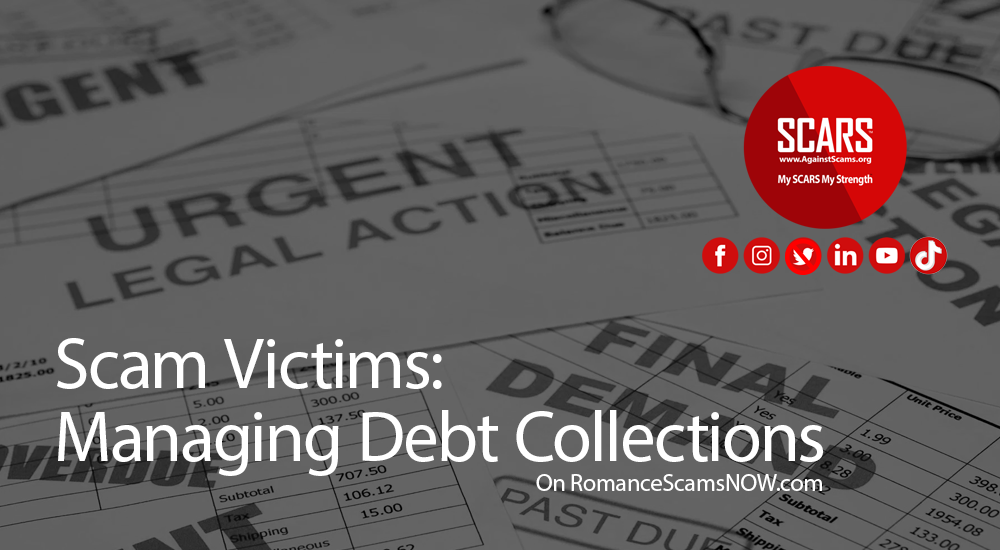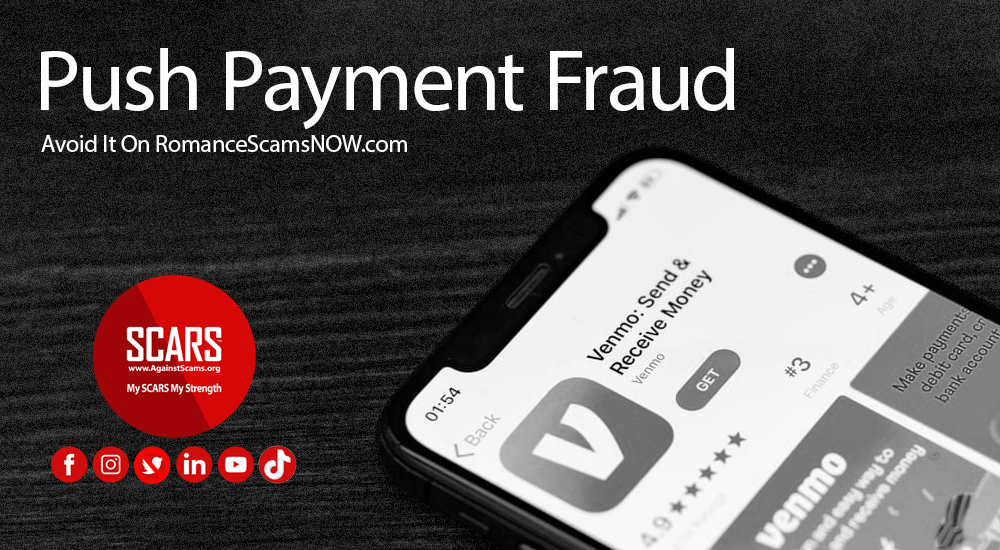Authorized Push Payment Fraud (APP Fraud)
The Fastest Form Of Payment Scams – How Scams Work
Convenience & Instant Criminality! A SCARS Insight
What Is Authorized Push Payment Fraud (APP Fraud)?
Essentially, This Is When Scammers Convince A Customer To Transfer Money To Them Via An Instant Payment
It is a form of fraud in which victims are manipulated into making real-time payments to fraudsters, typically by social engineering attacks involving impersonation. As of 2019 in the United Kingdom, because the victims of these frauds authorized the payments, albeit mistakenly, they are typically not fully reimbursed by their banks.
What Is A Push Payment And How To Avoid Fraud?
Scammers are getting more and more sophisticated, and one of the newer forms of deception is authorized push payment fraud. Banks are currently deliberating on how to handle the aftermath of this, and how much compensation customers can claim.
Due to the fact it’s an instant payment, the money is already gone before the victim is able to reclaim it (as may happen with older forms of payments).
The requests for the money may come over the phone (in a call or via text) or by email or on social media, and they are often sophisticated and socially engineered.
They may find you (via social media) and find out you’re having work done on your house (because you posted it) and send an invoice that matches that of your construction company. Or, they may call saying they’re your bank’s fraud team, ironically scamming you using the information you give them. The variations are endless.
For victims of this kind of fraud is that, since you technically gave the information willingly, it’s difficult to get compensation from financial institutions. This is true in most scams – however, more and more police understand that it was based upon deception and thus is a crime.
Currently, only about a fraction of the money lost to push payment fraud is refunded to customers, but work is underway to change this.
In the U.K. as part of a draft voluntary code of conduct for banks, it would become the standard that customers were refunded as long as they’d taken reasonable steps to check they were paying the correct person. Under the standard there will be eight reasons banks can decide not to reimburse customers:
- If they refuse to listen to warnings from their bank
- If they recklessly share (in their opinion) their security credentials
- If they don’t take steps to make sure the person they paid was correct
- If they lie to the bank
- If they are negligent (in their opinion)
- If they fail to heed a confirmation of the payee result (which is a future scheme whereby customers will be notified of the name of the payee rather than just the account number and sort code)
Unfortunately, there are no equivalent standards in the United States or elsewhere that we are aware of.
Remember, your bank is not an insurance company. They have limited protections, but this will not always help you – the rules are serious and unforgiving.
In The Meantime, Pay Attention!
- Never give your details to anyone who calls or emails or messages you without complete verification
- If it looks like it’s from somewhere or someone you might know, hang up and call them to confirm
- If from a financial institution – regardless of the reason for the request – do not respond, hang up and look up the authorized bank phone number on your card or statements or find their official website or email online and contact them
- Never believe your own caller ID or email addresses – often scammers can fake or clone these details easily
-/ 30 /-
What do you think about this?
Please share your thoughts in a comment below!
RATE THIS ARTICLE?
LEAVE A COMMENT?
Recent Comments
On Other Articles
- Nikolaus on Dating Scammers Paradise: Ivory Coast: “The Ivory Coast romance scam is still going on. It seems that local authorities don’t handle the issue effectively!” Dec 10, 02:17
- on The SCARS Institute Top 50 Celebrity Impersonation Scams – 2025: “Thank you – we will.” Dec 7, 11:41
- on The SCARS Institute Top 50 Celebrity Impersonation Scams – 2025: “You should add Sean Bean to your list of Celebrities. This one is very good, and persistent. He will be…” Dec 2, 12:07
- on How You Think & Talk About Your Scam Affects Your Recovery: “I have hung on to the scams for far too long. With the intervention of an all-merciful God, I have…” Nov 6, 22:13
- on Disengaging From A Fake Scam Relationship: “Taci, you may want to join our new support community at www.SCARScommunity.org” Nov 6, 03:01
- on Disengaging From A Fake Scam Relationship: “This particular article helped me discover the many things I did wrong the first time I was scammed. I should…” Nov 5, 22:49
- on About the SCARS RomanceScamsNOW.com Website – 24 Years Published: “It was unavailable for a few days, but it is available again. If he would be interested, he is welcome…” Nov 5, 00:59
- on About the SCARS RomanceScamsNOW.com Website – 24 Years Published: “My husband has been scammed and your classes have been helping him but now he can’t seem to access them.…” Oct 26, 14:57
- on Talia Shepard – Impersonation Victim – Stolen Photos – 2024: “Hi, I’m Patrick from Belgium and I found this site by chance, so I just got to know it, and…” Oct 17, 23:46
- on Talia Shepard – Impersonation Victim – Stolen Photos – 2024: “Hallo ik ben Patrick uit Belgie en het is in verband over PayPal. Ik heb het dit jaar spijtig genoeg…” Oct 17, 23:08
ARTICLE META
Important Information for New Scam Victims
- Please visit www.ScamVictimsSupport.org – a SCARS Website for New Scam Victims & Sextortion Victims
- Enroll in FREE SCARS Scam Survivor’s School now at www.SCARSeducation.org
- Please visit www.ScamPsychology.org – to more fully understand the psychological concepts involved in scams and scam victim recovery
If you are looking for local trauma counselors please visit counseling.AgainstScams.org or join SCARS for our counseling/therapy benefit: membership.AgainstScams.org
If you need to speak with someone now, you can dial 988 or find phone numbers for crisis hotlines all around the world here: www.opencounseling.com/suicide-hotlines
A Note About Labeling!
We often use the term ‘scam victim’ in our articles, but this is a convenience to help those searching for information in search engines like Google. It is just a convenience and has no deeper meaning. If you have come through such an experience, YOU are a Survivor! It was not your fault. You are not alone! Axios!
A Question of Trust
At the SCARS Institute, we invite you to do your own research on the topics we speak about and publish, Our team investigates the subject being discussed, especially when it comes to understanding the scam victims-survivors experience. You can do Google searches but in many cases, you will have to wade through scientific papers and studies. However, remember that biases and perspectives matter and influence the outcome. Regardless, we encourage you to explore these topics as thoroughly as you can for your own awareness.
Statement About Victim Blaming
Some of our articles discuss various aspects of victims. This is both about better understanding victims (the science of victimology) and their behaviors and psychology. This helps us to educate victims/survivors about why these crimes happened and to not blame themselves, better develop recovery programs, and to help victims avoid scams in the future. At times this may sound like blaming the victim, but it does not blame scam victims, we are simply explaining the hows and whys of the experience victims have.
These articles, about the Psychology of Scams or Victim Psychology – meaning that all humans have psychological or cognitive characteristics in common that can either be exploited or work against us – help us all to understand the unique challenges victims face before, during, and after scams, fraud, or cybercrimes. These sometimes talk about some of the vulnerabilities the scammers exploit. Victims rarely have control of them or are even aware of them, until something like a scam happens and then they can learn how their mind works and how to overcome these mechanisms.
Articles like these help victims and others understand these processes and how to help prevent them from being exploited again or to help them recover more easily by understanding their post-scam behaviors. Learn more about the Psychology of Scams at www.ScamPsychology.org
Psychology Disclaimer:
All articles about psychology and the human brain on this website are for information & education only
The information provided in this article is intended for educational and self-help purposes only and should not be construed as a substitute for professional therapy or counseling.
While any self-help techniques outlined herein may be beneficial for scam victims seeking to recover from their experience and move towards recovery, it is important to consult with a qualified mental health professional before initiating any course of action. Each individual’s experience and needs are unique, and what works for one person may not be suitable for another.
Additionally, any approach may not be appropriate for individuals with certain pre-existing mental health conditions or trauma histories. It is advisable to seek guidance from a licensed therapist or counselor who can provide personalized support, guidance, and treatment tailored to your specific needs.
If you are experiencing significant distress or emotional difficulties related to a scam or other traumatic event, please consult your doctor or mental health provider for appropriate care and support.
Also read our SCARS Institute Statement about Professional Care for Scam Victims – click here to go to our ScamsNOW.com website.


















Thank you for your comment. You may receive an email to follow up. We never share your data with marketers.